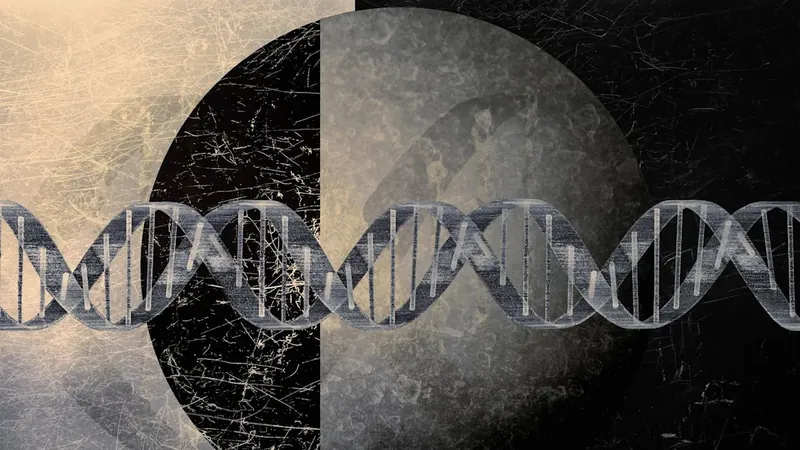
Scientists Unveil a Hidden Code in the Human Genome that Could Change Everything!
2025-07-28
Author: Wei Ling
DNA's Surprising Secret: A Game-Changer in Genetics!
Did you know that around 45% of human DNA is made up of transposable elements (TEs)—genetic remnants from ancient viruses long thought to be mere ‘junk DNA’? But that perception is undergoing a radical makeover!
A groundbreaking study has revealed that these seemingly trivial fragments harbor secrets that could redefine our understanding of genetics. This research categorizes TEs based on evolutionary links and conservation levels, spotlighting one specific family of sequences known as MER11, which appears to play a pivotal role in gene expression.
From Trash to Treasure: The Evolution of TEs!
The fascinating journey of DNA began in 1869 with Swiss physician Friedrich Miescher and took a giant leap forward in the 1940s thanks to cytogeneticist Barbara McClintock, who discovered TEs, also dubbed "jumping genes." Fast forward to the Human Genome Project, which confirmed that 45% of our genome is composed of these elements.
For decades, TEs were dismissed as genetic clutter. However, recent scientific insights are revealing their vital contributions to genome function, evolution, and species diversity.
Decoding the Mystery: New Research Breakthrough!
The latest international study, published in the journal Science Advances, has innovated a fresh approach to tackle the enigmatic TEs. Researchers developed a classification method that skips traditional tools, focusing instead on evolutionary relationships and conservation quality within the primate genome.
Focusing on the MER11 family, they created subgroups labeled MER11_G1 through G4, revealing a fascinating evolutionary timeline, with G1 representing the oldest sequences and G4 the youngest. This categorization unveiled that these subfamilies have a critical regulatory role, akin to on-off switches for gene expression, especially during early human development.
Lessons from the Past: Ancient Viruses Shape Our Genes!
To visualize these patterns in action, the team employed a sophisticated technique called the lentiviral massively parallel reporter assay (lentiMPRA) on 7,000 MER11 sequences using human stem cells and early neural cells. Astonishingly, the youngest subgroup (MER11_G4) had the most substantial impact on gene expression, using regulatory motifs to influence gene development.
This research not only illuminates the potential functions of ancient viral DNA but also underscores an extraordinary reality: that remnants from our distant past can actively shape the present and future of primate evolution. The quest to decipher the human genome is far from over, but with every revelation, our understanding continues to expand!



 Brasil (PT)
Brasil (PT)
 Canada (EN)
Canada (EN)
 Chile (ES)
Chile (ES)
 Česko (CS)
Česko (CS)
 대한민국 (KO)
대한민국 (KO)
 España (ES)
España (ES)
 France (FR)
France (FR)
 Hong Kong (EN)
Hong Kong (EN)
 Italia (IT)
Italia (IT)
 日本 (JA)
日本 (JA)
 Magyarország (HU)
Magyarország (HU)
 Norge (NO)
Norge (NO)
 Polska (PL)
Polska (PL)
 Schweiz (DE)
Schweiz (DE)
 Singapore (EN)
Singapore (EN)
 Sverige (SV)
Sverige (SV)
 Suomi (FI)
Suomi (FI)
 Türkiye (TR)
Türkiye (TR)
 الإمارات العربية المتحدة (AR)
الإمارات العربية المتحدة (AR)